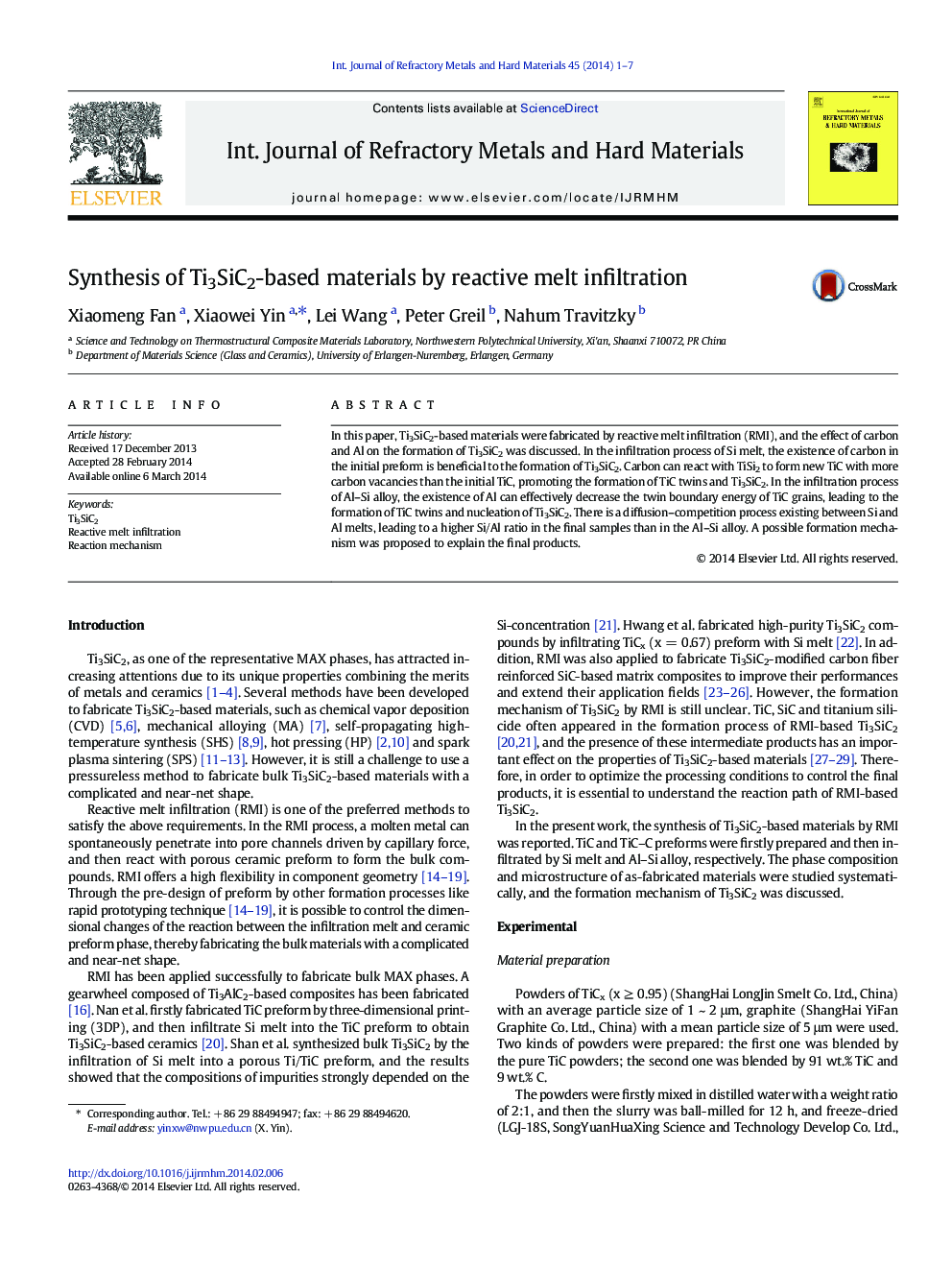| Article ID | Journal | Published Year | Pages | File Type |
|---|---|---|---|---|
| 1603178 | International Journal of Refractory Metals and Hard Materials | 2014 | 7 Pages |
•The existence of carbon promotes the formation of Ti3SiC2.•Al plays a catalytic role and promotes the formation of Ti3SiC2.•A diffusion–competition process exists between Al and Si melts.•Si prefers to inward diffusion due to the more reaction activity with TiC than Al.
In this paper, Ti3SiC2-based materials were fabricated by reactive melt infiltration (RMI), and the effect of carbon and Al on the formation of Ti3SiC2 was discussed. In the infiltration process of Si melt, the existence of carbon in the initial preform is beneficial to the formation of Ti3SiC2. Carbon can react with TiSi2 to form new TiC with more carbon vacancies than the initial TiC, promoting the formation of TiC twins and Ti3SiC2. In the infiltration process of Al–Si alloy, the existence of Al can effectively decrease the twin boundary energy of TiC grains, leading to the formation of TiC twins and nucleation of Ti3SiC2. There is a diffusion–competition process existing between Si and Al melts, leading to a higher Si/Al ratio in the final samples than in the Al–Si alloy. A possible formation mechanism was proposed to explain the final products.
